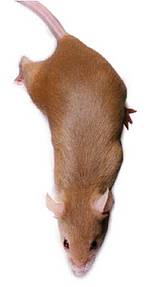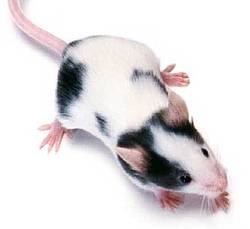Mouse urine unlocks new generation of sensors

Advances in molecular biology credited with artificial olfaction breakthrough
Inspired by animals’ delicate sense of smell and the way mice mark their territory, a team of artificial olfaction researchers is using proteins in mouse urine to develop a powerful new generation of biologically-inspired sensors.
A thousand-fold increase in sensor sensitivity has been demonstrated using mouse Major Urinary Proteins (MUPs) coated on a traditional piezoelectric crystal.
“MUPs are giving us very high sensitivity and selectivity – at levels that are unachievable with conventional sensing,” says Prof Krishna Persaud at Manchester University, a lead researcher in the EU-funded artificial olfaction research network GOSPEL.
“Classical electronic sensing methods had reached their limit, but the whole field of artificial olfaction has been energised by rapid advances in molecular biology and genetics.”
Protein cages
Mice secrete a phenomenal amount of protein in their urine – up to 40mg per ml – a huge release of energy for a tiny animal. MUPs are part of a protein family with a cage-like structure, which traps odorant molecules and then releases them slowly. This helps mice to mark and defend their territory, and it is this feature which makes MUPs stable and useful as a biosensor.
The same sort of odorant binding protein occurs ubiquitously in the noses of mammals, insects and reptiles, and scientists are trying to understand their precise role in olfaction. It is not clear whether they carry molecules away from or towards olfactory detectors, or both.
The proteins are small and very specific about what they bind to, but can be easily engineered to bind to a number of materials. “The unusual properties of MUPs make them particularly suitable for sensors and sensing,” says Prof Persaud. “Development of these concepts will give us sensors which are much more sensitive than traditional systems.”
The team applied MUPs to piezoelectric materials, which resonate with a precise frequency when an electric potential is applied. Target molecules were shown to bind to the MUP coating, changing the mass of the material and altering its resonant frequency.
This technique is well known in artificial olfaction, though detection limits were typically in the range of parts per million.
“The mouse urine is giving us sensitivity to the parts per billion,” says GOSPEL leader Dr Udo Weimar at Germany’s University of Tubingen.
“GOSPEL’s multidisciplinary approach, and the blending of traditional AO techniques with genetics, molecular biology and biochemistry, is giving us the basis for a whole new generation of sensor.”

“Earlier attempts to develop artificial olfaction systems tried to compete with nature. We’ve realised the futility of this approach, and now we’re collaborating with nature. Nature has given us the tools to target those molecules of specific interest to us.”
The new sensors have many potential applications, though will first be applied to environmental monitoring. They work well in water so may be used to detect oestrogen levels in processed sewage, a challenge for many other sensing techniques.
Security applications may include detection of explosives, and in healthcare MUP-based sensors may become important diagnostic tools.
